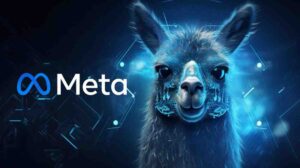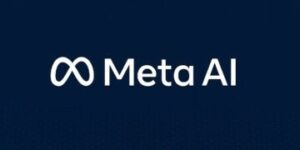AI is undergoing a wave of change.
The roadmap for Meta’s Llama family of large language models (LLMs), which was recently revealed at LlamaCon 2025, presents a curious image of AI’s future in which open source is not only a preference but the driving force behind it.
If Meta’s vision is realized, we won’t be looking at little advancements; rather, we’re confronting a tsunami of AI driven by accessibility and cooperation that might destroy the walled gardens of private models.
Llama 4: More Rapid, Multilingual, Extensive Context

A quantum increase in capabilities is promised by the main act, Llama 4. Acceleration is crucial, according to Meta, which makes interactions feel more seamless and less like waiting for a digital oracle to make its announcements. With proficiency in an astounding 200 languages, its multilingual abilities seem to be the real game-changer.
Consider a future in which language limitations in AI communication are relegated to a minor historical anecdote. By bringing people together regardless of their native tongue, this degree of inclusion has the potential to democratize access to AI on a genuinely global scale.
Additionally, context window limitations—one of LLMs’ enduring problems—will be addressed by Llama 4. Complex jobs require the model to be able to process massive volumes of data, and Meta’s assertion that the context window may be as big as the whole U.S. tax code is astounding.
Consider the potential for in-depth comprehension and thorough analysis. According to reports, there are notable speed gains in the notorious “needle in a haystack” problem of extracting certain information from a vast text, and Meta is actively working to make it even more effective. For practical uses, this improved capacity for precise information processing and recall will be essential.
Read Also : Review of the Galaxy Book 5 Pro: A stylish ultrabook designed for efficiency
Scalability in Hardware
Building massive models is only one aspect of Meta’s goal; another is enabling AI on a variety of devices.
Scalability is a key consideration in the design of the Llama 4 series. The simplest version, “Scout,” is said to be able to operate on a single Nvidia H100 GPU, opening up strong AI to smaller businesses and individual researchers.
The mid-sized model, “Maverick,” will combine accessibility and power by running on a single GPU host. Emphasizing smaller but highly competent models indicates a practical strategy to wider adoption, even though the appropriately titled “Behemoth” will surely be a large endeavor.
Importantly, Meta directly addresses the financial obstacles to AI adoption by promoting a very cheap cost-per-token and performance that frequently surpasses other top models.
Various Uses of Llama in Real Life

Llama’s influence transcends the boundaries of the planet. The model’s resilience and dependability in harsh environments are demonstrated by its deployment on the International Space Station, which offers crucial answers without a live link to Earth. Real-world applications are already revolutionizing our globe.
A medical app called Sofya, which uses Llama, is significantly cutting down on doctors’ time and effort and promises to ease the strain on hospital staff.
Llama is being utilized by used automobile marketplace Kavak to improve the customer experience by giving purchasers better educated advice.
To increase productivity inside a large company, AT&T is also using Llama to prioritize assignments for its internal developers.
Performance and the vital component of security for corporate users are further guaranteed by a collaboration between Box and IBM that was founded on Llama.
Open, Affordable, and User-Centered AI
Meta wants to give consumers ownership over their data and AI future by making Llama quick, cheap, and open.
An important step in achieving this aim is the availability of an API to enhance usability, which lowers the entry barrier for developers. Users can submit their training data, get status reports, and create personalized, fine-tuned models that can be run on their choice AI platform with the Llama 4 API, which promises to be a highly user-friendly experience.
The closed-off character of certain private AI solutions is directly challenged by this degree of control and flexibility.
Read Also : India’s newest and most popular gadgets for 2025
Benefits of Open Source and Upcoming Difficulties
Ali Ghodsi highlighted Databricks’ support for open source, pointing out its capacity to stimulate adoption, lower costs, and promote innovation. Additionally, he emphasized the increasing popularity of smaller, more streamlined versions that are performing on par with their bigger counterparts. The impetus behind this trend is further highlighted by the upcoming introduction of “Little Llama,” which is even more tiny than Scout.
In the future, the emphasis will be on safe and secure model distillation, making sure that smaller models don’t acquire flaws from their bigger counterparts.
Although Llama Guard and similar tools are good first steps in mitigating these threats, additional work is required to ensure security and quality across an expanding number of models. One new issue is objectivity: if a competitor’s product is truly the greatest match, open models may suggest it, which might result in more truthful and user-focused AI.
In the end, data is the true competitive advantage, even though AI capabilities are developing quickly. It is encouraging to see that the skills required to deal with models are becoming more accessible as they grow more capable.

[…] Read Also : Meta Llama 2025: The Tsunami of Open-Source AI […]
[…] Read Also : Meta Llama 2025: The Tsunami of Open-Source AI […]